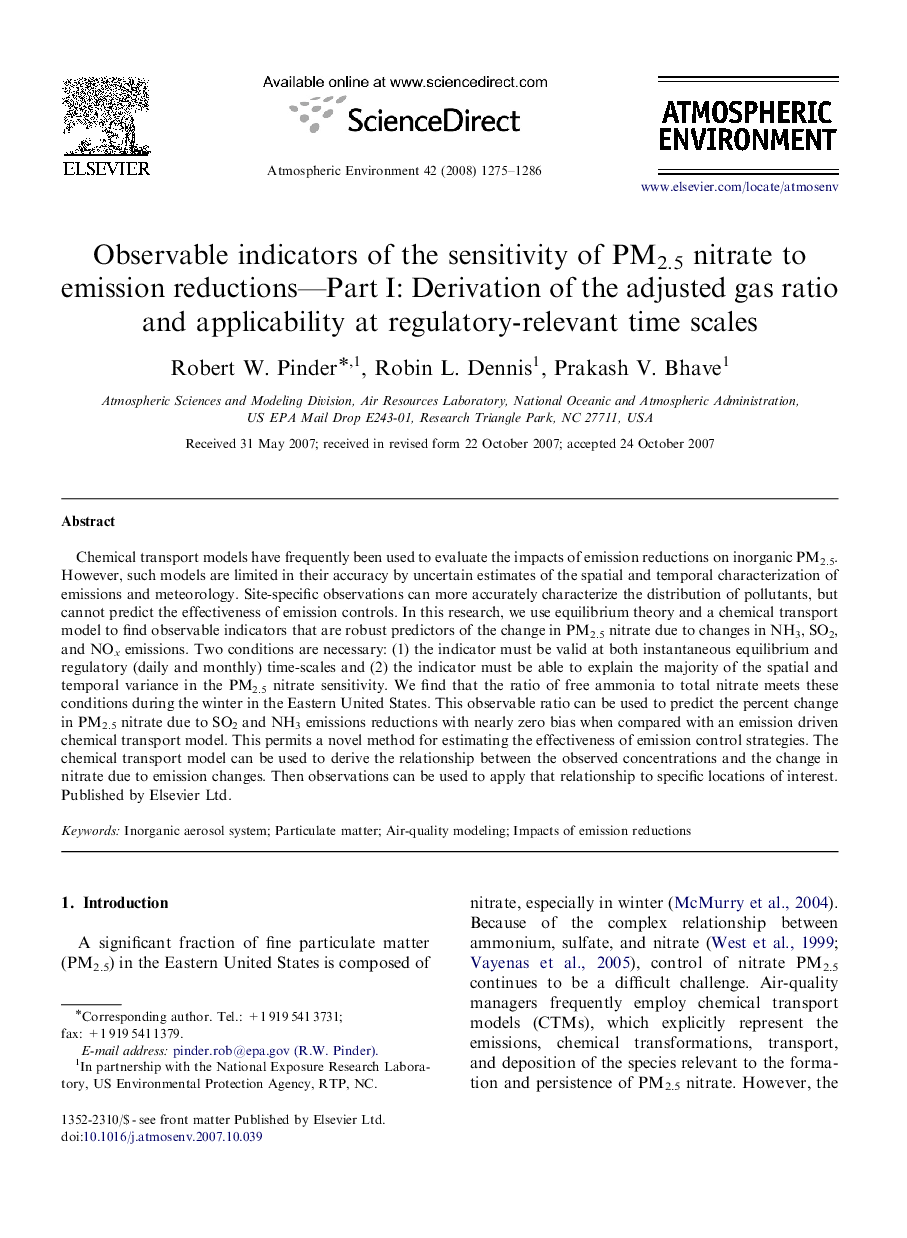| کد مقاله | کد نشریه | سال انتشار | مقاله انگلیسی | نسخه تمام متن |
|---|---|---|---|---|
| 4442794 | 1311166 | 2008 | 12 صفحه PDF | دانلود رایگان |

Chemical transport models have frequently been used to evaluate the impacts of emission reductions on inorganic PM2.5. However, such models are limited in their accuracy by uncertain estimates of the spatial and temporal characterization of emissions and meteorology. Site-specific observations can more accurately characterize the distribution of pollutants, but cannot predict the effectiveness of emission controls. In this research, we use equilibrium theory and a chemical transport model to find observable indicators that are robust predictors of the change in PM2.5 nitrate due to changes in NH3, SO2, and NOx emissions. Two conditions are necessary: (1) the indicator must be valid at both instantaneous equilibrium and regulatory (daily and monthly) time-scales and (2) the indicator must be able to explain the majority of the spatial and temporal variance in the PM2.5 nitrate sensitivity. We find that the ratio of free ammonia to total nitrate meets these conditions during the winter in the Eastern United States. This observable ratio can be used to predict the percent change in PM2.5 nitrate due to SO2 and NH3 emissions reductions with nearly zero bias when compared with an emission driven chemical transport model. This permits a novel method for estimating the effectiveness of emission control strategies. The chemical transport model can be used to derive the relationship between the observed concentrations and the change in nitrate due to emission changes. Then observations can be used to apply that relationship to specific locations of interest.
Journal: Atmospheric Environment - Volume 42, Issue 6, February 2008, Pages 1275–1286